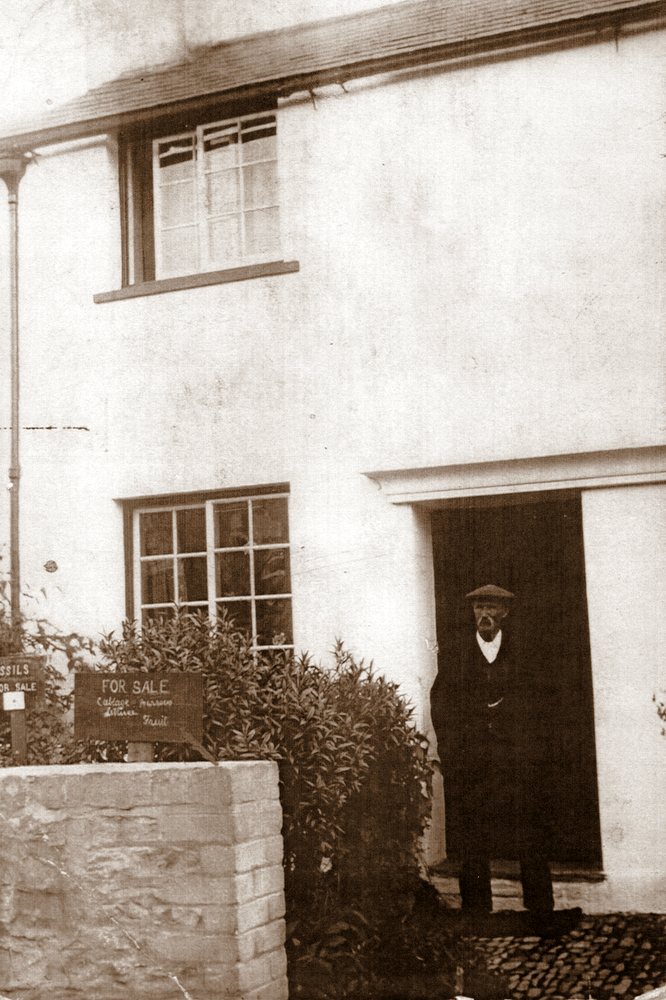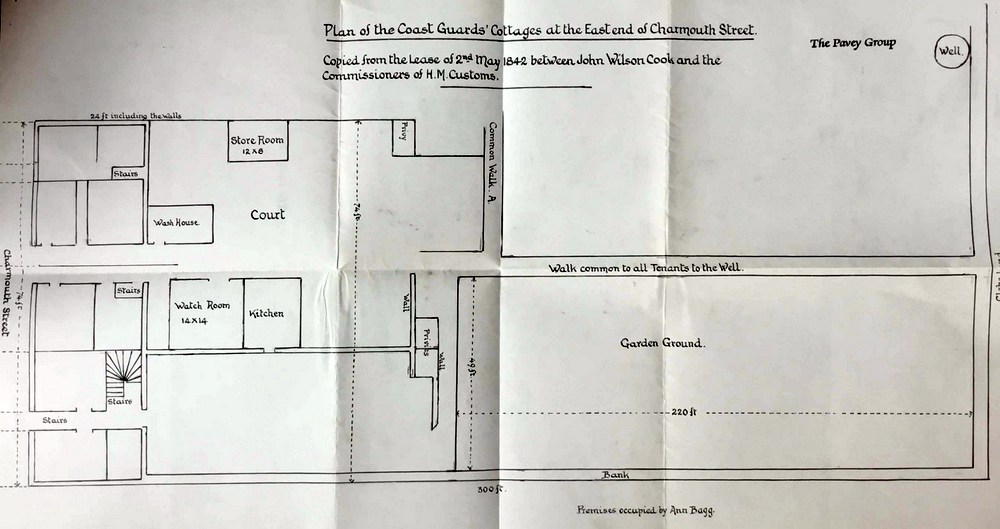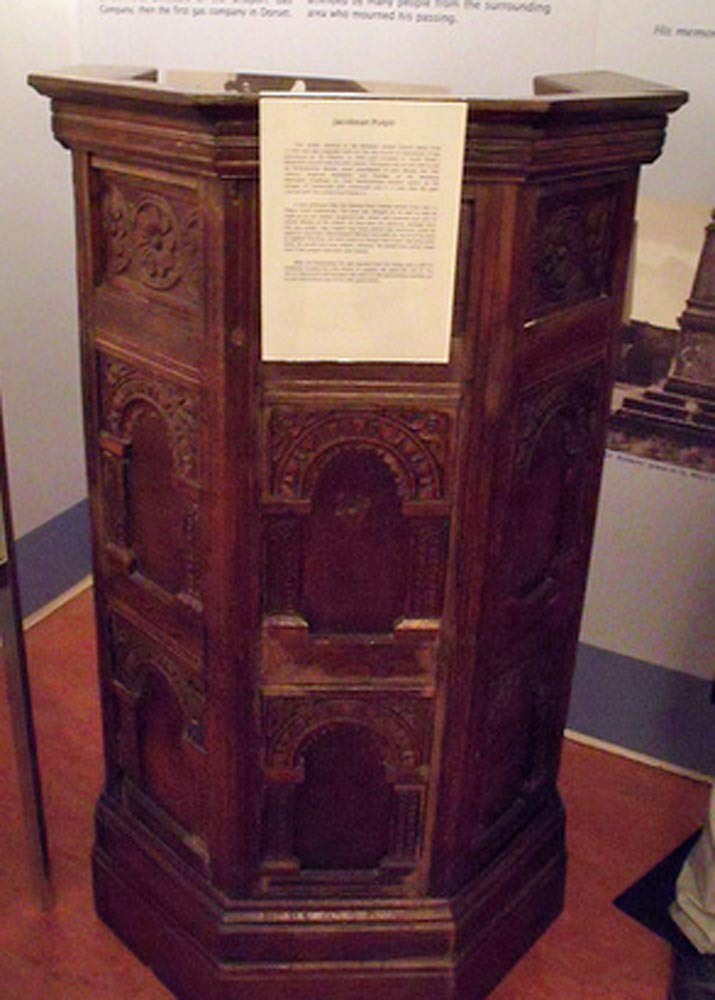Click on images or Charmouth Home to return back.


The row of houses known as "Mill View" has an interesting history. On 6th. December 1623 Richard Tybber of Axminster sold to his son Thomas "all that messuage or tenement and all that piece of ground containing about two acres and all the motie or half freehold of one other messuage situate lying and being in the towne of Charmouth, together with all gardens in the tenure of John Latmore also Hollard his assignes, one house in the tenure of the widow Symes" Thomas Tybber died and left his property to his daughters Mary Bathshua, Edith and Ann. Edith married William Storme and in 1651 to the judgment of John Drake and Edward Butler Esquires, William Storme and his wife Edith were allotted with the consent of Ann and Mary all that dwelling house. On 24th May 1652 they sold it to Stephen Lymbry for the sum of fourteen pounds. When I read this in the deeds of the house (given to me by Miss Toynbee in order to keep them in the village) I thought that I had found the house in which Stephen Lymbry had been locked "by his wife when he was preparing to take King Charles to France, Unfortunately the King's flight was in 1651 one year before Stephen bought it. The next owner was John Bartram, who in 1650 sold it to Richard Bayly, and he sold, it on 10th October 1663 for the sum of £32 - 2 - 6d to Bartholomew and John Westley. In the indenture their names are spelt with a T" but they both sign "Wesley": . They sold the property for £44 to George Cumminge of Charmouth - a silk mercer -on 24th March 1668.
The next deed is about the half freehold of one other messuage. An indenture of 26th.March 1706 between Susanna Chase of Westhell, Dorset and John Dare of Charmouth - malter. "Susanna Chase for the sum of twenty two pounds in silver and two pieces of broad gold sold to John Dare all that tenement, courtyard and garden and half tenement called Culver-mead", having the land of Anthony Ellesdon on the east side (now you know why the turning off Bridge Road is called "Ellesdon") and a tenement in possession of John Mintern on the west side." The next we learn of George Cumminge of Charmouth is on 8th.March 1714 in an indenture between him and Edward Smith of Axminster, grocer, of a mortgage of £21 - 17. On 24th December 1716, George Cumminge failed to pay interest and on 24th November 1718 he sold the messuage for £68 to Richard Gollop of Charmouth, gentleman. With regard to "Culver Mead". in 1705 Susanna Chase had let the messuage on 99 years lease to John Dare at a rent of 11 shillings and 10 pence and in 1731, John having died, Elizabeth, his widow, became sole owmer of "Culver Mead" which she sold to John Edwards � shoe maker for £12. John Edward's daughter Mary married Jethroe Cook, a carpenter, and they had a son, Amasa, who inherited the property. In 1814 Amasa Cook mortgaged both properties to the Rev. Brian Combe for £212 which two years later was increased to £398. In his will Brian Combe left the residue of his estate to his five nieces. In the mean time Cook had built on this property six houses which were let in 1824 to Charles Baker - a saddler. Ameliora Lock (possibly a widow) Terence Case - a tailor. Richard Dinning - a labourer, Robert Tizzard - a miller and John Moore -a gardener. In 1825 Amasa, conveyed them to his son John Wilson Cook - a carpenter. In 1842 the property was described as having a frontage of 74 ft. and a depth of 300 feet more or less with a path leading to a well, which was used by all tenants, in the south east corner.In an indenture dated 2nd.May 1842 between James Brown of Burton Bradstock - mortgagee - John Wilson Cook and Charles Andrew Scovell of the Custom House. London. John Cook let the six houses for 21 years to Charles A.Scovell at a rental of £40 by four equal quarterly payments. So they became the home of the Preventive Service.
In 1851 they were destroyed by fire. After rebuilding in 1857 they were let on a lease of 30 years at a rental of £101 �8-0 per annum to the Lords of the Admiralty for the Coastguards. They were described as seven cottages, Officer's house, watch and Store -room with out-houses. Also all the garden behind having a length of 240 feet and breadth of 122 feet. On September 11th 1852 J.W. Cook sold all the cottages for £75 with a mortgage of £1700, which Cook was unable to pay, to Miss Anna Maria Beeston of Syminton, Hants. On 25th January 1867 the Lords of the Admiralty surrendered to Miss Beeston for £1,000 all the heriditaments and premises and the Coast guards moved to fresh cottages in Lower Sea Lane. In more recent days the- cottages have been occupied by a number of people among whom were George Clarke, whose son Frank, kept an early Ford lorry in a large shed adjacent to 'Mintaka" . The lorry could be speedily converted to a charabanc by mounting a row of seats and securing them to the floor of the lorry by a few nuts and bolts.

Bartholomew Wesley and his son, John Wesley are shown as signing an indenture for their house sale in 1668. The property now called “Mill View” stands on the site of the former house where they lived. The deeds still exist in the Dorset Record Office and shortly after the Wesleys moved it was bought by the same Stephen Limbry who was involved in the attempted escape of the King. The former 17th Century Pulpit Bartholomew preached from can be seen today in Bridport Museum following its removal from the former Church. Another reminder of this famous Gentleman is of course Wesley Close which was named after him in more recent times.


1652 W.Storme and wife to Stephen Lymbry described as Mariner
1663 Richard Bayly of Charmouth,mClothier and Bartholomew Westley and his sinner John of Bridport,mClerks. Stephen Limbry onnEast side of The Street p, 687
1668 Bartholomew sold it to Geotge Cumminge silk mercer.
1850
All 7 houses and Culmersmead had been occupied by Binstes, Restorick. Lancaster, Buckle. Collins, Lewis, Carme, Henry Cater, John Cook.
1857 rebuilt and then Coastguards
Coast guard station only used by single men, the thatch cottage on Axminster Road was the married quarters. The coast guard moved when they gave up the premises to Lower Sea Lane, which the Admiralty rented from Mr. hodges.
Charmouth, we present Bartholomew Westly, clerk, it's present possessor by sequestration and that the house,garden and orchard with 4 acres of Glebe land, arable and pasture is worth £4. That the whole tyres of this parish belong each to the minister and is worth £18 per annum.
